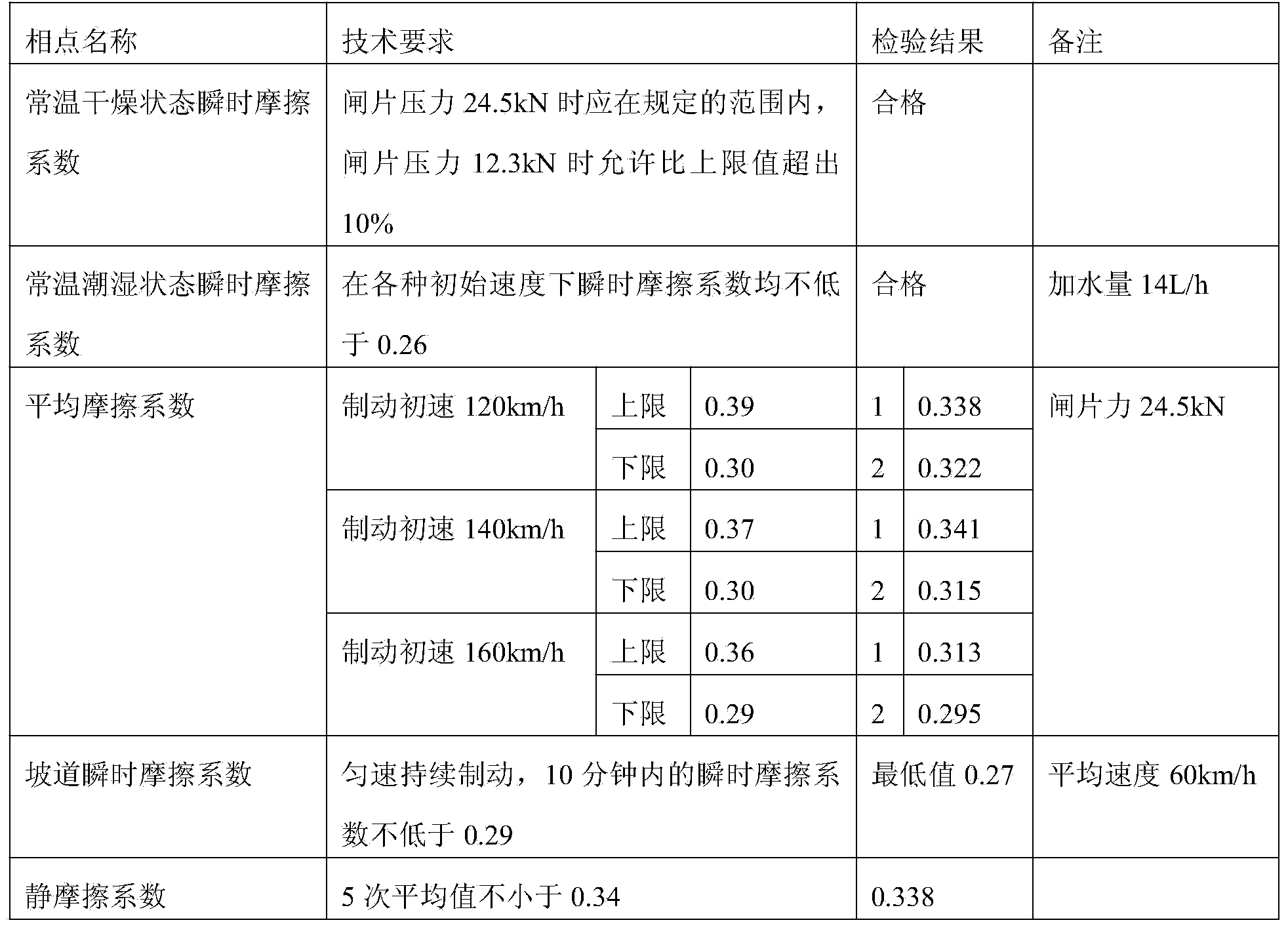Automobile brake pad
A technology of brake pads and automobiles, applied in the field of brake pads, can solve the problems of easy entry into the lungs, poor thermal conductivity, brake failure, etc., and achieve the effects of reducing noise pollution, long service life, and slowing down energy transfer
- Summary
- Abstract
- Description
- Claims
- Application Information
AI Technical Summary
Problems solved by technology
Method used
Image
Examples
Embodiment 1
[0023] An automobile brake pad, which comprises a steel back and a friction material bonded on the steel back, wherein the friction material comprises the following components by weight: 5 parts of butyl butylbenzene, peroxide Hydrogen cumene 1 part, epoxy resin 2 parts, boron phenolic resin 6 parts, polypropylene 6 parts, nylon powder 6 parts, boron nitride 6 parts, silane coupling agent A-1510.01 parts, cumene peroxide 2 parts 1 part of sulfur powder, 1 part of benzoic acid, 1 part of stearic acid, 1 part of boric acid, 55 parts of graphite, 5 parts of ceramic fiber, 1 part of potassium titanate, 1.95 parts of reduced iron powder, 1.5 parts of barium sulfate, aluminum alum 1 part of soil, 1 part of feldspar powder, 1 part of zinc oxide, 0.02 part of accelerator TT, 0.02 part of N-phenyl-2-naphthylamine, 1 part of fluorspar powder, 1 part of silicon carbide, and 1 part of coumarone.
[0024] The preparation method of the automobile brake pad is obtained according to a convent...
Embodiment 2
[0032] An automobile brake pad, which comprises a steel back and a friction material bonded on the steel back, wherein the friction material comprises the following components by weight: 5 parts of butyl butylbenzene, peroxide Hydrogen cumene 1 part, epoxy resin 2 parts, boron phenolic resin 6 parts, polypropylene 6 parts, nylon powder 6 parts, boron nitride 6 parts, silane coupling agent A-1510.01 parts, cumene peroxide 2 parts 1 part of sulfur powder, 1 part of benzoic acid, 1 part of stearic acid, 1 part of boric acid, 60 parts of graphite, 5 parts of ceramic fiber, 0.5 part of potassium titanate, 1.95 parts of reduced iron powder, 1.5 parts of barium sulfate, aluminum alum 1 part of soil, 1 part of feldspar powder, 1 part of zinc oxide, 0.02 part of accelerator H, 0.02 part of N-phenyl-2-naphthylamine, 1 part of fluorspar powder, 1 part of silicon carbide, and 1 part of coumarone.
[0033] The preparation method of this automobile brake pad is with embodiment 1.
Embodiment 3
[0035] An automobile brake pad, which comprises a steel back and a friction material bonded on the steel back, wherein the friction material comprises the following components by weight: 5 parts of butyl butylbenzene, peroxide Hydrogen cumene 1 part, epoxy resin 2 parts, boron phenolic resin 6 parts, polypropylene 6 parts, nylon powder 6 parts, boron nitride 6 parts, silane coupling agent A-1510.01 parts, cumene peroxide 2 parts 1 part of sulfur powder, 1 part of benzoic acid, 1 part of stearic acid, 1 part of boric acid, 50 parts of graphite, 8 parts of ceramic fiber, 1 part of potassium titanate, 1.95 parts of reduced iron powder, 1.5 parts of barium sulfate, aluminum alum 1 part of soil, 1 part of feldspar powder, 1 part of zinc oxide, 0.02 part of accelerator M, 0.02 part of N-phenyl-2-naphthylamine, 1 part of fluorspar powder, 1 part of silicon carbide, and 1 part of coumarone.
[0036] The preparation method of this automobile brake pad is with embodiment 1.
[0037] To...
PUM
 Login to View More
Login to View More Abstract
Description
Claims
Application Information
 Login to View More
Login to View More - R&D
- Intellectual Property
- Life Sciences
- Materials
- Tech Scout
- Unparalleled Data Quality
- Higher Quality Content
- 60% Fewer Hallucinations
Browse by: Latest US Patents, China's latest patents, Technical Efficacy Thesaurus, Application Domain, Technology Topic, Popular Technical Reports.
© 2025 PatSnap. All rights reserved.Legal|Privacy policy|Modern Slavery Act Transparency Statement|Sitemap|About US| Contact US: help@patsnap.com


